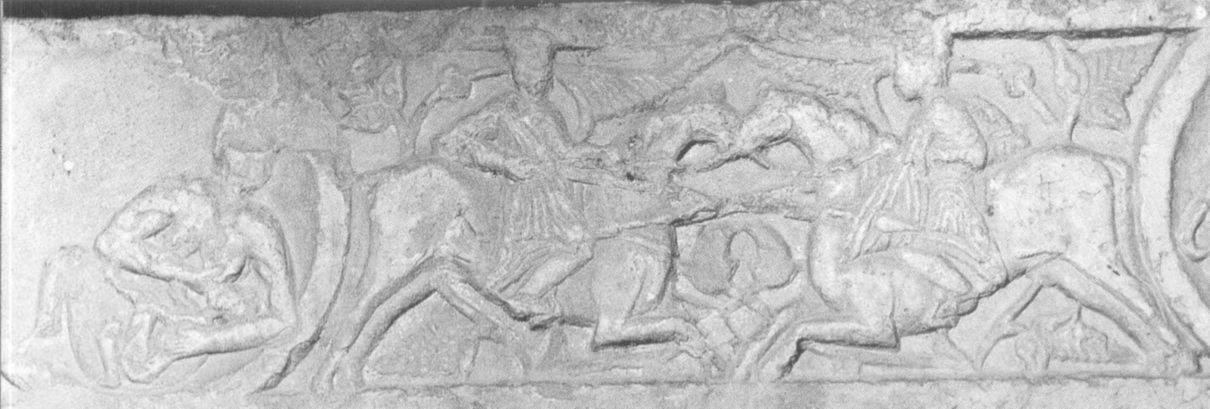Amazon Prime Student 6-month Trial

Shop Amazon - Create an Amazon Baby Registry
Detail of Two Horsemen on
The Pila
an Islamic Ablution Basin, early to mid 11th century. Jativa, Spain.

A larger detail of Horsemen on The Pila, an Islamic Ablution Basin, early to mid 11th century. Jativa, Spain.
Here two apparently unarmoured horsemen fight with broad-bladed spears (Archaeological Museum, Xativa (Jativa), Spain.
From p.8, MAA - 200 - El Cid and the Reconquista 1050-1492 by David Nicolle, 1988.
Referenced on p.15, The Moors - The Islamic West - 7th-15th Centuries AD by David Nicolle:
The so called 'Pila' is a late 11th- or early 12th-century carved basin which stood in the gardens of the palace of the local Banu Mujahid ruler of Denia.
The costume of these two combatants seems more North African than Andalusian, while another scene shows three men with long beards and peculiar headgear, pulling each other's beards in a symbolic representation of a quarrel.
Perhaps the carving actually dates from after the Murabit conquest, the two horsemen being North African or Saharan warriors jousting while the men arguing represent the fractious taifa rulers whom the Murabitun overthrew?
Back to The Pila, an Islamic Ablution Basin, early to mid 11th century
See also Relief with Horse Riders & Wrestlers, 12th-13th century, Dagestan, Caucasus
Saharan tribal cavalry on Plate G, Men-At-Arms Series 125, The Armies of Islam 7th-11th Centuries by David Nicolle & Angus McBride, based on the Pila.


